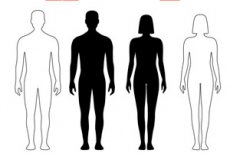New publications
"We Lived to 50 — and Faced New Risks": How People Live Who Survived Cancer in Childhood
Last reviewed: 18.08.2025

All iLive content is medically reviewed or fact checked to ensure as much factual accuracy as possible.
We have strict sourcing guidelines and only link to reputable media sites, academic research institutions and, whenever possible, medically peer reviewed studies. Note that the numbers in parentheses ([1], [2], etc.) are clickable links to these studies.
If you feel that any of our content is inaccurate, out-of-date, or otherwise questionable, please select it and press Ctrl + Enter.

The Journal of Clinical Oncology published a report from the large CCSS cohort that people who beat childhood cancer and lived to age 50+ still have an increased risk of premature death, secondary tumors, and chronic diseases (especially cardiovascular diseases). The main drivers of late problems are primarily associated with radiation used in the 1970s and 80s. At the same time, in terms of mental health, by age 50, survivors are no different from their brothers/sisters - rare good news.
Background
- Why it matters now: Thanks to advances in treatment, 5-year survival rates for childhood cancers have risen to ~85%, and the cohort of survivors has aged: in the US alone, as of January 1, 2020, there are about 496,000 people alive who survived cancer aged 0–19. This means that more and more of them are reaching 50+ — the age at which data have long been lacking.
- What was already known about late effects. Even in the classic CCSS studies it was shown that ~30 years after diagnosis, >70% of adult survivors have at least one chronic disease, and a significant proportion have severe or life-threatening conditions. This forms a long-term “footprint” of therapy.
- Trends toward decreasing late mortality. Dose reductions in radiotherapy and detoxication of regimens have resulted in marked reductions in late mortality among 5-year survivors in comparable cohorts from the 1970s to the 1990s. However, risks have not disappeared entirely, particularly for those exposed to radiation and anthracyclines.
- Emerging clinical challenges: As the cohort ages, cardiovascular and metabolic complications, secondary tumors, and fragility/sarcopenia syndromes come to the forefront, all requiring separately described follow-up trajectories beyond age 50. These are the questions addressed by the current CCSS analysis.
- Surveillance standards exist, but they need to be adapted to 50+. Oncologists and therapists already have a framework — COG Long-Term Follow-Up Guidelines v6.0 (October 2023): they set screening according to the “therapy trail” (radiation doses, anthracyclines, transplantation, etc.). But there was little data specifically for the 50+ age group — the current work closes this gap and suggests where to strengthen screening (cardiac checkups, oncoscreening, risk factor correction).
- What is unique about the current JCO report (2025) is that it focuses on survivors aged 50 and over, giving their 5/10/15-year mortality risks and comparisons: with the general population for cancer mortality, with siblings for the burden of chronic diseases. This design helps to separate the effects of aging from the “legacy” of therapy.
What kind of work is this?
The study is a report from the Childhood Cancer Survivor Study (CCSS), a national database in the United States (~40,000 people diagnosed with cancer before age 21). The authors selected those who survived to age 50 and compared: (1) the frequency of new cancer diagnoses - with the general population; (2) the risks of chronic diseases - with siblings.
Key findings
- Five times the risk of dying from the disease. At age 50+, childhood cancer survivors are about five times more likely to die from cancer-related causes than their peers without a history of cancer. This reflects the “long shadow” of early therapies.
- The heart is a weak spot. By age 55, many have worse cardiovascular health than their 70-year-old siblings: more heart failure, arrhythmias, ischemic events; more fragility/sarcopenia and low exercise tolerance.
- Secondary tumors are a real threat. The risk of new cancers remains elevated for decades, especially in those who have received radiation therapy (the mechanism is long-term DNA damage and mutagenesis).
- Mental health - no decline. At the population level, survivors at age 50 are no more likely to report anxiety/depression than their siblings - a possible effect of resilience and accumulated coping experience.
Why so: the role of “old” treatment regimens
Most of the analyzed patients were treated in the 1970s–80s, when the radiation load was higher and targeted and immune drugs were not yet available. It is already known that the gradual “de-poisoning” of regimens in the 1990s–2010s reduced late mortality, but did not completely eliminate the risk. Therefore, the key task today is early screening and prevention in the age cohort of survivors.
What does this mean for patients and doctors?
- Personalized surveillance plan: Childhood cancer survivors should discuss with their physician proactive screenings—for example, mammograms or colonoscopy earlier than generally accepted ages, plus regular cardiac checkups (EKG/echo, lipids, BP, glucose).
- Focus on modifiable factors. Controlling blood pressure, weight, sugar, smoking cessation, and physical activity are critical—these factors significantly affect cardiovascular outcomes in survivors.
- Transfer of treatment data. The history of radiation doses, anthracyclines, transplants, etc. should be available to the treating physician - individual monitoring trajectories depend on this.
Restrictions
This is an observational study; some effects may be related to treatment patterns in the past (today's regimens are milder). The results are most relevant to countries with comparable treatment histories; the generalizability of the findings to other health systems requires caution. However, the fact that risks persist beyond age 50 is supported by a large and well-characterized cohort.
Source: Journal of Clinical Oncology, 2025 — Health outcomes beyond age 50 in childhood cancer survivors: A report from the Childhood Cancer Survivor Study (CCSS). The publication was accompanied by a City of Hope press release with clinical commentary and screening recommendations. https://doi.org/10.1200/JCO-25-00385
